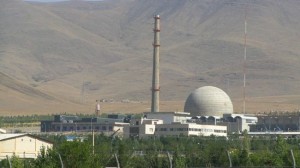 A view of Iran�s Arak heavy water reactor (file photo)[/caption]
A view of Iran�s Arak heavy water reactor (file photo)[/caption]Since a final agreement on Iran's nuclear program was reached some months ago, there have been a few minor missteps on Tehran's part and the process of rolling back the sanctions has not been entirely smooth.
Beyond these hiccups, the IAEA has continued to verify that Iran is complying with its commitments. This has enabled Washington to directly engage Tehran on two strategic priorities that they both hold in common -- the fight against the Islamic State in Iraq and Syria (ISIS), and stabilizing the unity government in Afghanistan.
The United States and Iran have found common cause in maintaining the unity of Iraq. Iran has not joined the American-led coalition against the Islamic State, but discussions between U.S. and Iranian officials on ISIS -- which began on the margins of the P5+1 nuclear talks in June 2014 -- have moved to ongoing, direct bilateral talks focused on defeating ISIS.�Both Washington and Tehran have disclosed that some limited coordination of efforts has taken place. Some believe�that this has already been extended to exchanges of intelligence and direct collaboration on military actions.
Read more here
The Iran Project is not responsible for the content of quoted articles.










